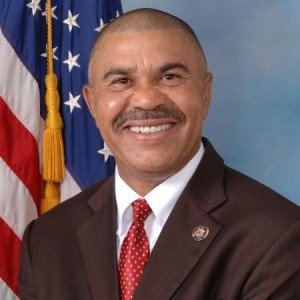 Missouri Congressman Russ Carnahan has led a charmed political life. After losing a congressional race in rural Southeast Missouri in 1990, Carnahan moved to St. Louis and ran for the state House in 2000, when his father was a popular two-term governor. He ran against a political neophyte and prevailed by 64 votes. In 2004, he ran in a 10-way primary for ex-House Leader Dick Gephardt’s seat and won by 1.6%. (Disclosure: I finished second, and six years later went to federal prison after lying to the government during an FEC investigation stemming from a Carnahan complaint.) In 2010, in a district Obama carried by 20 points, he edged Tea Party favorite Ed Martin 49-47. None of those election results was determined until the wee hours of the morning.
Missouri Congressman Russ Carnahan has led a charmed political life. After losing a congressional race in rural Southeast Missouri in 1990, Carnahan moved to St. Louis and ran for the state House in 2000, when his father was a popular two-term governor. He ran against a political neophyte and prevailed by 64 votes. In 2004, he ran in a 10-way primary for ex-House Leader Dick Gephardt’s seat and won by 1.6%. (Disclosure: I finished second, and six years later went to federal prison after lying to the government during an FEC investigation stemming from a Carnahan complaint.) In 2010, in a district Obama carried by 20 points, he edged Tea Party favorite Ed Martin 49-47. None of those election results was determined until the wee hours of the morning.
But in 2011, Congressman Carnahan’s luck ran out.
After Missouri lost a congressional seat, the Legislature eliminated his district and split it into four other districts, one represented by black Democrat Lacy Clay and the others by Republicans. Clay did not discourage the Legislature from passing the map. Unlike Carnahan, he built relationships with state Republican leaders, engaging them throughout the process. When the map reached the state Senate, which experiences frequent filibusters that are rarely ended via cloture (fewer than ten times in 50 years), the Republican leadership braced for an all-night filibuster by Senate Democrats. But none spoke; the bill passed immediately.
Currently, Carnahan is supporting a lawsuit which alleges that the map illegally splits various “communities of interest.” The suit is unlikely to succeed, but even if it does, the Republican Legislature will redraw it in a way that narrowly remedies the Court’s issues and again targets Carnahan’s district.
So Carnahan shouldn’t put too many eggs in his legal basket. Instead, he should be raising money and canvassing the new 1st CD. Because, as I wrote months ago, his best chance of returning to Congress is not in the 2nd CD, where the Democratic Congressional leadership (and surely the CBC) have encouraged him to run. The 2nd CD is approximately 53% Republican, and given his 49% showing of the vote last cycle in a district that typically performed around 59% Democratic, it is unlikely he’d be able to attract the approximately 20K Republican-leaning independents necessary to win the 2nd CD. Here’s why his best route back to Washington is via a primary against Clay in the 1st CD.
***
Let’s start by assuming that, as in most recent St. Louis elections between a white and a black candidate, voting splits along racial lines. Although the new 1st CD is plurality-black, the relative youth of the district’s black population means that its voting-age population is 48.3% white and 45.5% black, an edge of 19K whites overall. But dig deeper and Rep. Clay is helped by the fact that district blacks are more likely to be Democratic than whites. Assuming 90% of district blacks and 65% of whites lean Democratic – appropriate given the terrain – it would mean approximately 234K black Democrats and 183K white Democrats.
However, in both South St. Louis City and in several district suburbs with substantial black populations, there are significant racial differences in average incomes. Because of higher income and education levels, a slightly higher likelihood of union affiliation, and a lower percentage of voters ineligible due to felony convictions, district whites are likely to turn out at a higher rate than blacks. If white Democrats vote at a rate 5% higher than blacks (25% vs 20%), it would mean that about 47K of projected primary voters are black, and 46K white.
That seems to suggest a slight edge for Clay. But it shouldn’t. First, district blacks have been voting for Carnahans for decades, since Russ’s father Mel was first on a statewide ballot in 1980. They supported Mel over hometown mayor Vince Schoemehl in the gubernatorial primary in 1992, who reciprocated this support with many prominent black gubernatorial appointments that helped him gain much goodwill in the black community.
Conversely, few whites will vote for Clay against a credible white candidate; though some white north St. Louis county labor types have voted for Clays since 1968, most district whites have never been represented by Lacy Clay or his father. Also, the Clay name garners mixed feelings among district whites. Clay’s father, ex-Rep. William Clay Sr., made his name leading civil rights protests, and was not particularly popular among whites, outside of labor. Most whites who did not love but at least respected Clay, Sr. for his acumen do not accord the son the same respect. Neither congressman has what one would traditionally call crossover appeal, but because of the nine times that Carnahan’s father, mother, and sister have appeared on statewide ballots since 1980, district blacks are much more accustomed to supporting Carnahans than whites are to supporting Clays.
Finally, as someone who represented a majority-black state Senate district fully contained within the new 1st CD, I can vouch for black district voters’ willingness to vote for white candidates who address issues they care about.
Overall, there won’t be many crossover votes; each family has been prominent for five decades, so most voters possess accurate information regarding the candidates’ racial identities. Given the factors described above, I estimate Clay gets 10% of the white vote in the primary (optimistic), and Carnahan gets 15% of the black vote (a conservative estimate). That would leave Carnahan with a narrow 48K-45K vote victory.
Finally, Clay is a weak fundraiser who even in the run-up to a potential 2012 challenge has in some quarters failed to raise $100K. Carnahan, conversely, pulled in nearly $2M last cycle. Carnahan, who will likely show $500K+ in the bank at year’s end, may raise $1.5-2M for the primary, whereas Clay is unlikely to reach $1M.
***
That’s not to say it will be easy for Carnahan. It would be nice to have a high-minded debate about the direction of national policy in a time of gripping economic anxiety, but anyone who knows St. Louis politics or the two principals doubts the likelihood of that. It won’t be a race between a modern-day Bobby Kennedy and Barack Obama. Instead, given both candidates’ limited crossover appeal, observers should prepare for a racially polarizing campaign in the long, sad tradition of St. Louis politics.
For Clay to win, he’ll need to mobilize blacks around the idea that the 1st CD has been represented by an African-American since 1968 and that a Carnahan victory would be a step backwards. Meanwhile, Carnahan will need to perform a delicate racial and ideological balancing act: appealing to the conservative, ethnic, old-school Democrats in South City who will be less than thrilled about the prospect of Clay as their Congressman, but not in such a way that he turns off blacks or white progressives in gentrifying city neighborhoods and affluent inner-ring suburbs. Can he thread the needle? We shall see. But he shouldn’t be written off because of the district’s demographics.
Although I’ve seen both congressmen in action, I don’t have a strong opinion on who would be a more progressive or effective representative. But my analysis suggests that Carnahan should stop suing and start running – in the 1st CD. Given his near-double-digit underperformance in the 3rd CD last year, he won’t be able to turn enough independents to take the Republican-leaning 2nd. But he could win the 1st, and given Clay’s “every man for himself” attitude during the redistricting fight, Carnahan should now adopt the same mentality.
I can’t say that Carnahan will win. But given the Sestak/Romanoff kerfluffles last cycle, the Obama administration is unlikely to offer a federal appointment, and so a 1st CD primary is his best option. It’s the advice I’d be following if I’d won in 2004 and found myself in Carnahan’s shoes today.
(Cross-posted, with permission of the author, from National Journal)











Leave a Reply